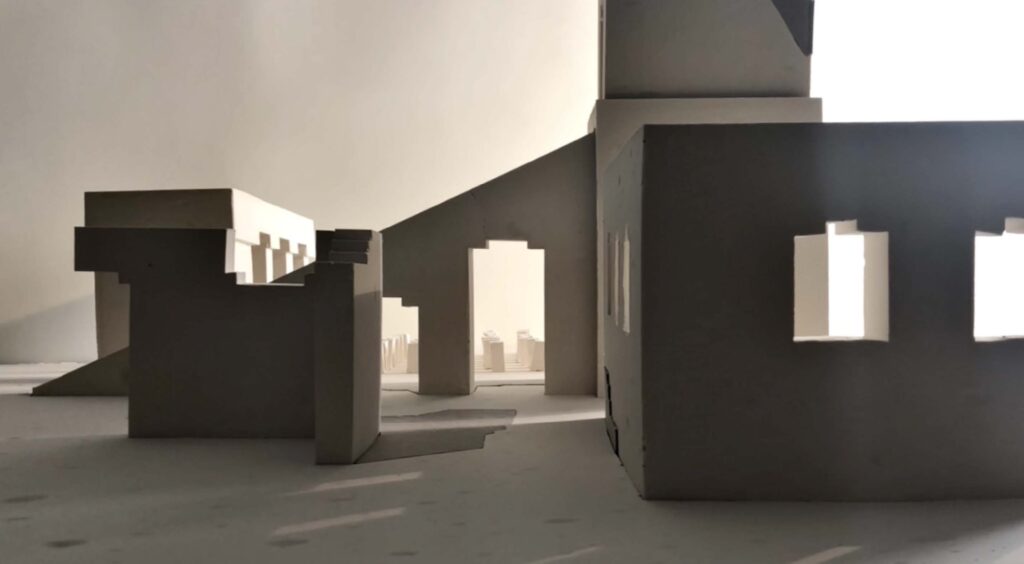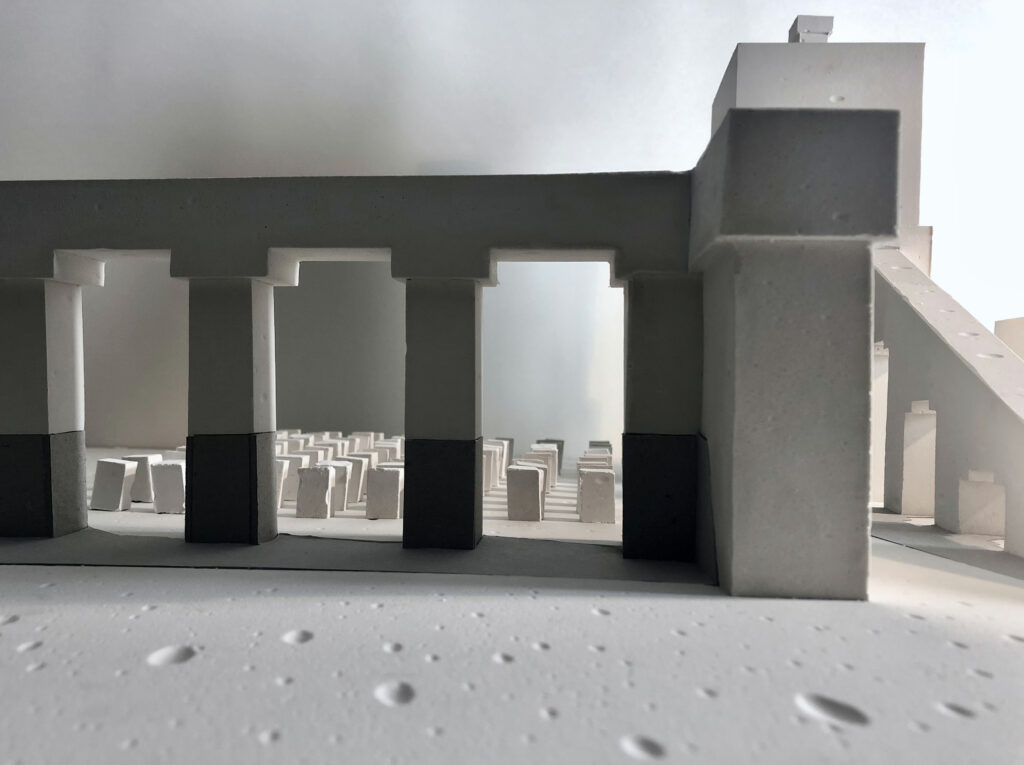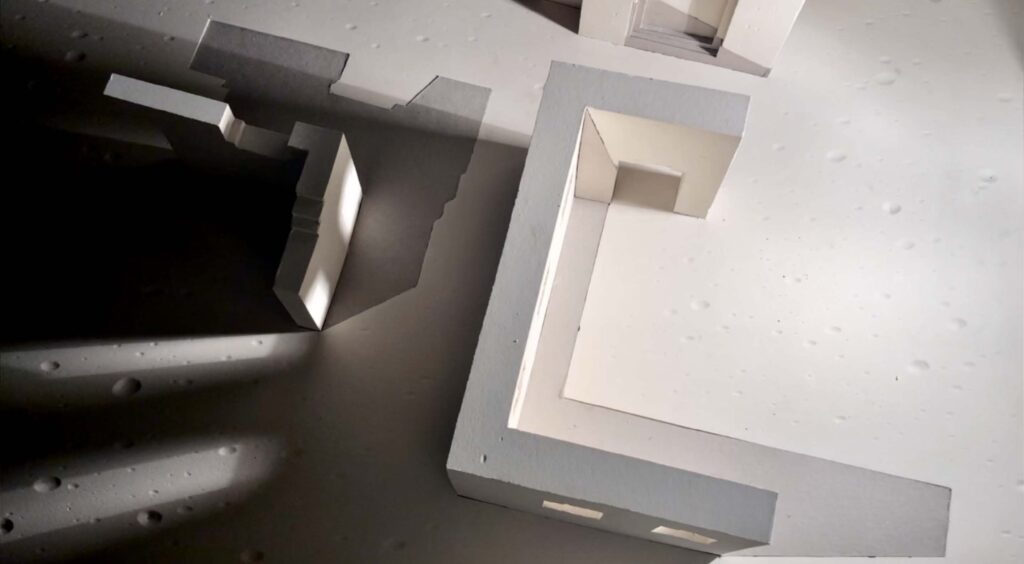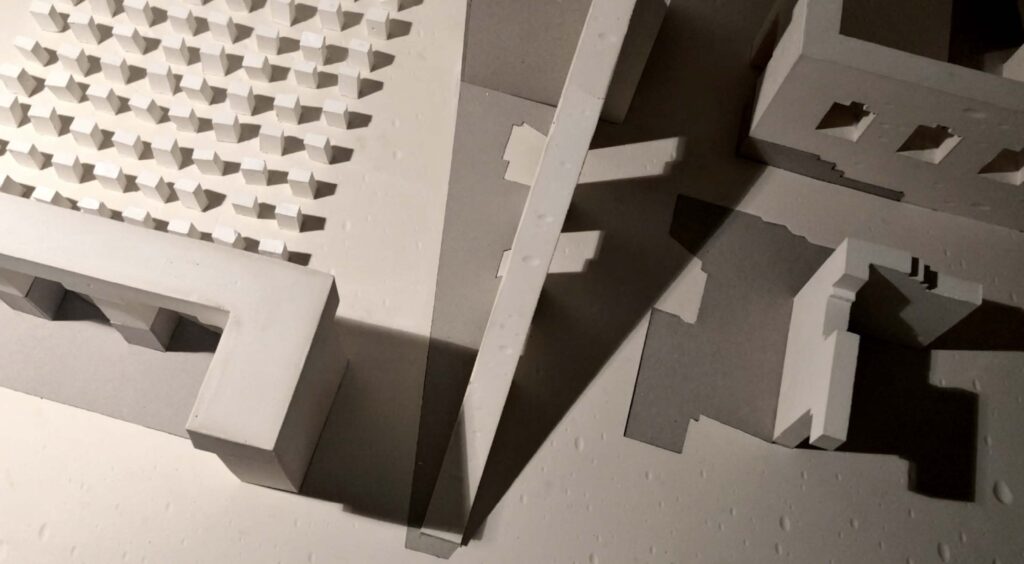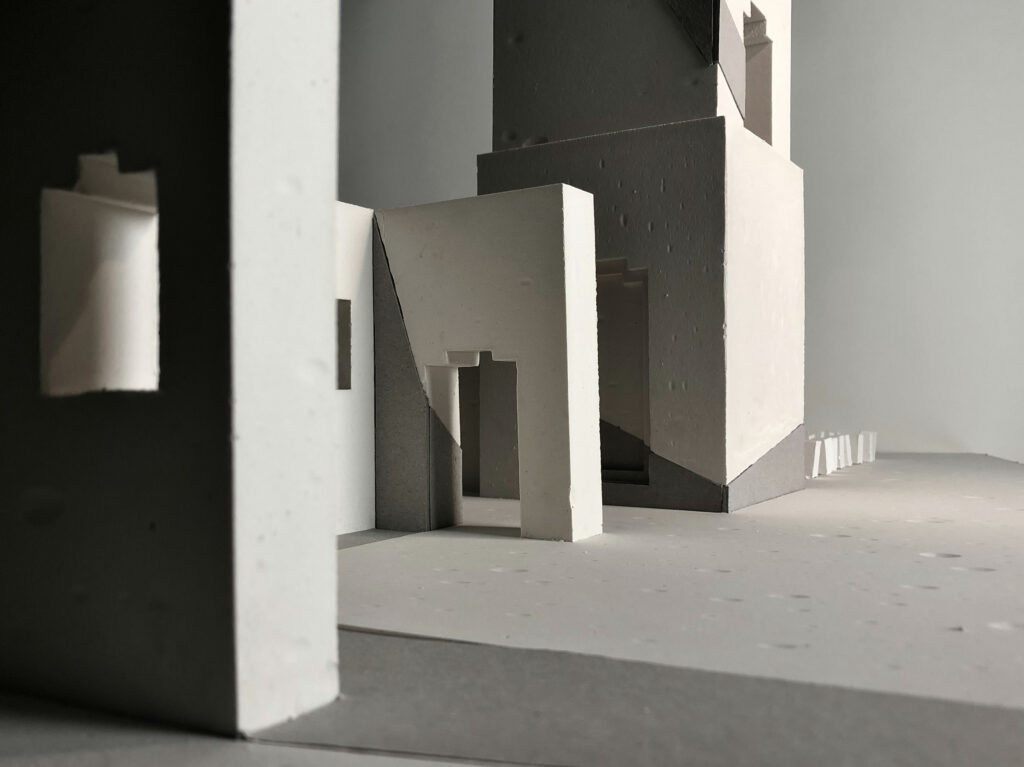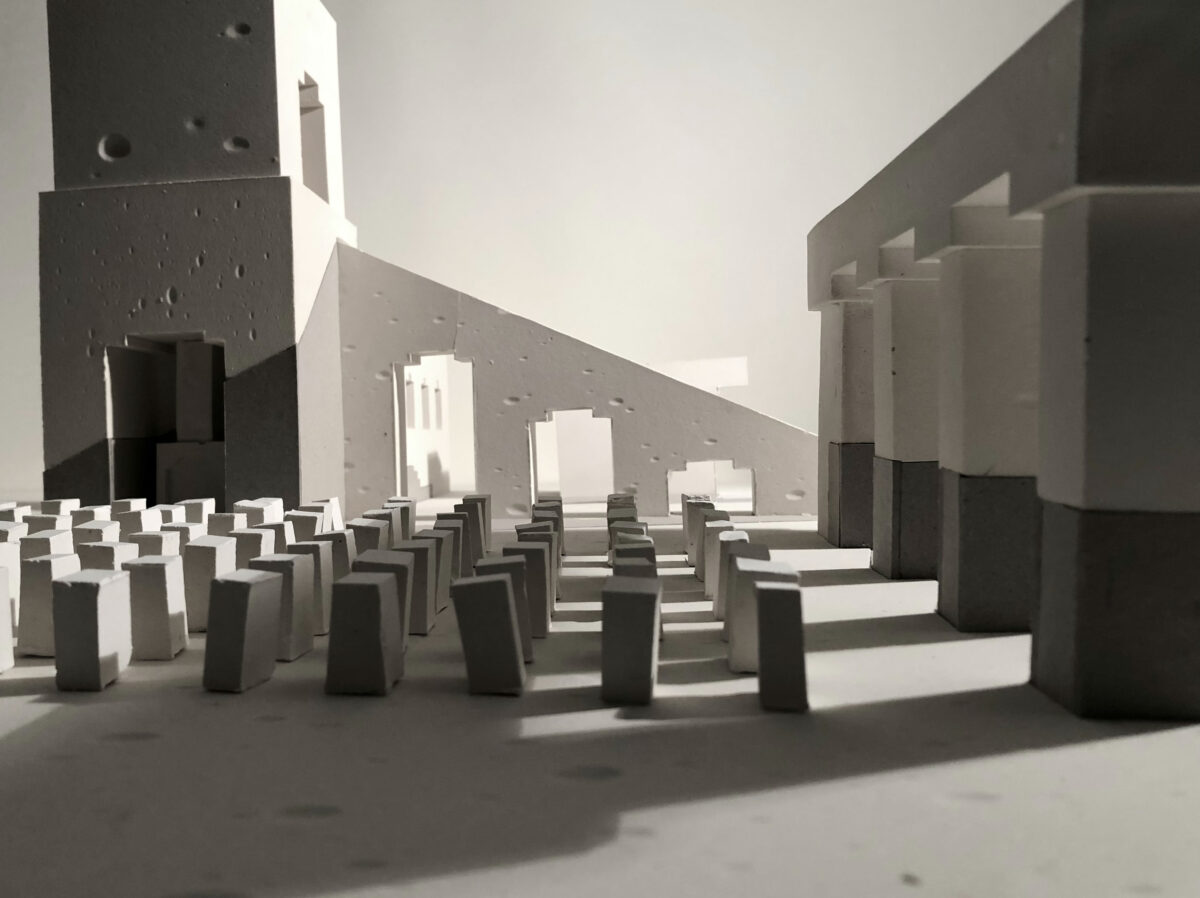My fascination started with a single phrase in Latin from the author Marc Augés’s “Non-lieux”: “In statu nascendi” (“In the state of being born”). It describes the temporary form of an object when it has already started existing, but is not yet fully formed. It is about the moment thatwe have left but have not yet arrived. “In statu nascendi”, refers to aconstant motion of slow transformation. Due to this motion a place canbecome a space, a transition space, similar to an incubation room where
everything is moving into temporary forms. Once the process has started in it doesn’t stop moving. A cycle has been set in motion.
In my Cycle of (de)construction, this constantly transforming space is presented as a landscape. A landscape that consists entirely of the same fabric or raw material. This raw material under-goes continuous changes in successive stages. In a first stage, this material will be withdrawn from the landscape. This stage we call deconstruction of the landscape.
Subsequently, in a second stage, the raw material is processed step by step into something entirely new. Finally, in the last stage, everything is returned to that same landscape in a completely new form. The landscape has been rebuilt, a construction is formed. This end of the process also immediately means the start of a next transformation stage. A natural perpetuum mobile has come to life. During the different processing stages, which follow each other incessantly, the material takes on a new shape. Each stage thus has its own start and end point, its own rhythm
of movement and its own goal to achieve. Despite the fact that all stages each exist separately with their own specific transformation, there is still one element through which they are all connected. That which urges the material to transform: time. The passage of time allows the existence of the constant movements, even though the duration of each singular transformation is different.
